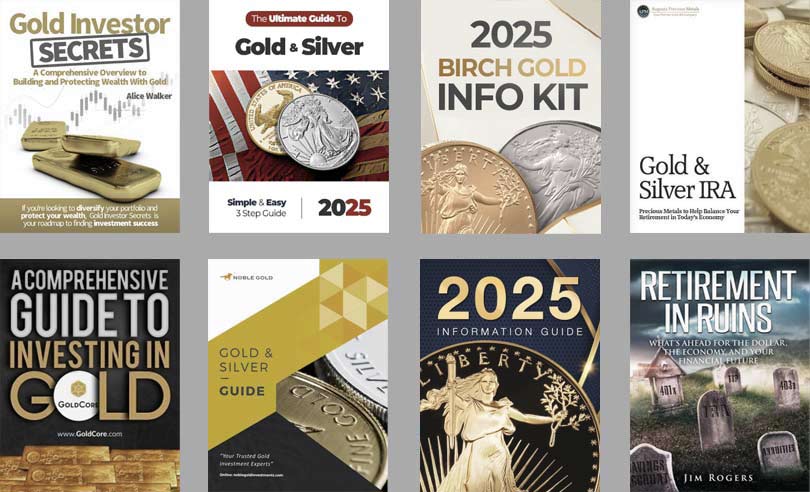Could the Basel III endgame really drive gold to $6,000?
 Bullion.Directory precious metals analysis 13 May, 2025
Bullion.Directory precious metals analysis 13 May, 2025
By Peter Reagan
Financial Market Strategist at Birch Gold Group
I recently wondered whether the supply strain seen in New York and London is related to the Basel III agreement, a set of rules meant to draw a clear line between “speculation on gold price movements” and “tangible, physical gold as a risk-free asset.”
The banking sector has been fighting tooth and nail to stall Basel III from the start. Despite being approved over two years ago, we’re still seeing it unfold in the tiniest of baby steps. The intention is clearly to avoid catching banks off-guard.
Even so, two-plus years later, the Bank of England (Britain’s primary depository and custodian of physical gold), can’t deliver gold bullion without a month-long delay at best. This suspicious coincidence is starting to get traction among other analysts.
For example, Frank Holmes, CEO of U.S. Global Investors, said in a recent interview that a new string of Basel III regulations will make gold as liquid as cash for institutions that need it. Holmes hasn’t mentioned the set of regulations on leveraging or tied them to the recent supply squeezes. His mention of Basel III in this context shows us what he’s thinking.
The Basel III agreement might be even more important for the gold market than I initially thought. And I already expected it to make significant waves.
Holmes sets his sights on a $6,000 gold price within the next three and half years. In other words, by the end of Trump’s current term as president. (It was just yesterday that we were told a Trump election was causing gold to fall.)
Now, everyone seems to agree it was the best possible thing for gold, as the metal has actually beat even bullish expectations over the past year.
It’s the second notable $6,000 forecast in the past week, after the one issued by JPMorgan that outlined a path to $6,000 resting on the shedding of U.S. assets, starting with the dollar. JPMorgan’s analysts said that we’re truly seeing de-dollarization materialize in an unmistakable manner. They agree the freezing of Russia’s dollar assets was a bridge too far – destroying over two centuries of trust in the dollar as a currency.
Well, as the dollar declines, gold rises – and $6,000 forecasts make sense when we consider that both Basel III endgame and global dedollarization are taking place simultaneously.
For some reason, besides Holmes, nobody seems to be tying these two trends together yet. (Except for us.) How long can this willful ignorance last? Rest assured, thousands of second-rate analysts will, once again, be caught flat-footed by gold’s next big gain.
Goldman Sachs rewrites history, says silver cannot catch up to gold (we say “Nonsense!”)
Goldman Sachs recently turned very bearish on silver, claiming the price of silver simply cannot take its historic place by outperforming the price of gold in this market cycle.
Now, just like every claim that “this time is different,” Goldman’s position requires thorough analysis. Because it doesn’t make sense. At least, I can’t translate their claim into reality…
The gold-to-silver ratio is passing 100 these days and everyone pretends it’s normal. When the ratio was just 80, everyone reminded us that every such instance in history resulted in massive gains for silver.
The gauge has only reached those levels three times in the last 20-odd years, correcting very hard to the upside every time. It’s only common sense. The gold/silver ratio has always measured silver’s fair value price compared to gold. During the centuries when silver was a form of money, that ratio ranged from 12-15:1 Since the end of the gold standard in 1972, the ratio averaged 55:1.
Over the last year, the ratio never dropped below 72:1 – yet instead of a correction, we’ve seen a further increase. Goldman Sachs now forecasts $3,800-$4,500 by the end of 2025.
And if silver doesn’t catch up at all, this will mean a gold/silver ratio likely exceeding 120. That’s happened exactly once in living memory – during the worst of the pandemic panic, about March 2020, when the ratio rose above 120 for a few days. You’ll note how brief the disconnect was, right? Because incredibly extreme price mismatches like this are always corrected by busy traders.
A steady 120:1 ratio is more than double the long-term historical average. I don’t think that’s sustainable.
Goldman Sachs blames central banks and their three-plus-year gold bullion buying binge. Central banks mostly ignore all other commodities. A handful of central banks have silver in their reserves (Russia, India, Mexico and Peru – although details are sketchy). Most don’t. So it’s safe to rule central bank demand out of the drivers of silver’s price. However, that still doesn’t remove the overwhelmingly positive structural picture for silver, whose demand has exceeded supply annually by over a million ounces for year after year!
Silver’s valuations around $30, well below its 1980s highs, as gold targets $3,500 appear to be the result of some kind of ploy that the Wall Street Silver guys have probably outlined.
So when Goldman says silver won’t catch up, I have to ask: what do they mean?
Silver is long overdue a very big upside price correction, to place it in line with all the other assets and commodities’ appreciation in price. This isn’t really dependent or related to central bank gold purchases, or a lack of institutional silver buying. The metal has to catch up eventually, so what they’re apparently telling us is that it won’t happen in the next two years.
That will stretch the gold/silver ratio to previously-unimaginable heights. Pundits are already targeting a $100 to $500 range for silver when the real correction comes.
Notes like the one by Goldman suggest that the correction will only be delayed. I expect that would result in even greater upside price explosions for silver – and I’m happy to wait for it, even for a couple of years.
China’s gold purchases and the yuan’s troubling volatility
Unnamed sources are now telling us that China is using its foreign currency reserves (likely starting with their dollars) to pay for their gold purchases. (However, the article makes it sound as if the PBoC took out a private sector loan or something.)
The central bank doesn’t need to do that. It can just print money – and then use it to buy gold. Especially to buy gold from its own citizens, as India has demonstrated. Eoing so inflates the money supply, which causes inflation for citizens and weakens the currency on the global stage.
Remember, a weaker yuan gives China a more favorable spot on the global trading stage. Weaker currency makes international exports look cheaper – and China’s economy relies on exports.
Besides just printing the yuan to buy gold, the PBoC can manipulate any another currency by selling its U.S. dollars to buy, say, rupees or rubles. Not too recently, we outlined how Russia appears to have created a trade system involving the ruble, gold and oil designed to let the country keep the money and ensure the citizens have none.
I explained that a BRICS currency isn’t necessary. BRICS already have ample access to trusted, liquid money in the form of physical gold. (I’ve expanded on this theory recently – check out my post on The Rio Reset for more details.)
China appears to have a similar operation going, just using their foreign reserves to pay (rather than oil, as in Russia’s case). The end result is that China’s (and Russia’s) central bank holds more and more gold while the average citizen struggles to get by.
Besides the obvious ill effects that a weaker yuan has already had on Chinese quality of life, we have also seen that it’s getting harder and harder for citizens to buy gold in China. High prices, sky-high local premiums or even fake gold, the road of a prospective Chinese gold buyer is a dangerous one.
Still, we hope that, just like in the U.S., informed citizens nonetheless have a way of regaining control of their personal wealth and preventing its erosion.
But we don’t expect it to be as neatly packed with a wrapper as in the form of a Gold IRA.
If the Chinese Communist Party really cared about the wellbeing of their citizens rather than the success of the state, they’d make it easier, rather than more difficult, to buy gold.
Peter Reagan

Peter Reagan is a financial market strategist at Birch Gold Group, one of America’s leading precious metals dealers, specializing in providing gold IRAs and retirement-focused precious metals portfolios.
Peter’s in-depth analysis and commentary is published across major investment portals, news channels, popular US conservative websites and most frequently on Birch Gold Group’s own website.
This article was originally published here











 Material provided on the Bullion.Directory website is strictly for informational purposes only. The content is developed from sources believed to be providing accurate information. No information on this website is intended as investment, tax or legal advice and must not be relied upon as such. Please consult legal or tax professionals for specific information regarding your individual situation. Precious metals carry risk and investors requiring advice should always consult a properly qualified advisor. Bullion.Directory, it's staff or affiliates do not accept any liability for loss, damages, or loss of profit resulting from readers investment decisions.
Material provided on the Bullion.Directory website is strictly for informational purposes only. The content is developed from sources believed to be providing accurate information. No information on this website is intended as investment, tax or legal advice and must not be relied upon as such. Please consult legal or tax professionals for specific information regarding your individual situation. Precious metals carry risk and investors requiring advice should always consult a properly qualified advisor. Bullion.Directory, it's staff or affiliates do not accept any liability for loss, damages, or loss of profit resulting from readers investment decisions.

Leave a Reply